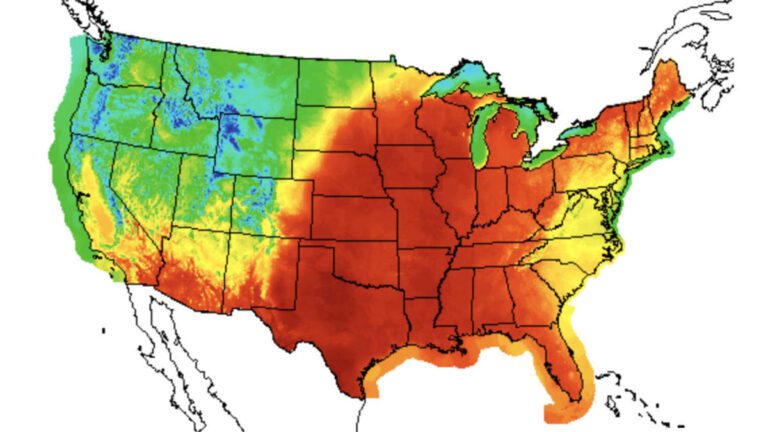After baking the state of Texas, an early-season heat wave is poised to break temperature records across the central and northeastern United States in the coming days.
The unseasonably warm weather, with temperatures expected to exceed 100 degrees Fahrenheit across a wide swath of the country, will affect millions of Americans from Texas to Maine and serve as yet another wake-up call to the growing evidence of climate change.
“The heat wave will produce temperatures that are 15-25 degrees above average. In most cases, temperatures this high have not been seen since September or August of last year.” AccuWeather said on its website.
On Saturday, heat records were broken in the cities of Del Rio, San Angelo and Abilene, Texas, with the thermometer registering 112 degrees in some locations. Over the weekend, San Antonio saw its first consecutive 100-degree days on record, the Weather Channel reported. The oppressive heat is exacerbated by the stifling humidity.
“Not only will the high humidity lead to increased daytime discomfort, but also unusually warm nights that are also more typical for July,” said Dan DePodwin, AccuWeather's head of forecasting operations.
As the heat wave pushed north and east from the Great Plains, daytime temperatures in cities like Chicago were hotter than those recorded in California's Death Valley.
While the sole cause of individual heat waves may be difficult to attribute to climate change, their increasing frequency has been linked to the build-up of greenhouse gases in the atmosphere.
“Abnormally hot days and multi-day heat waves are a natural part of daily weather variation. As the Earth's climate warms, however, warmer-than-usual days and nights are becoming more common, and heat waves are expected to become more frequent and intense”, h The Environmental Protection Agency reports on its website.
What is also clear is that as average temperatures continue to rise thanks to climate change, they intensify each individual event.
“Every heat wave in the world is now becoming stronger and more likely to occur due to human-caused climate change,” said Friederike Otto. a climate scientist at the Grantham Institute, Imperial College Londonhe told AFP.
A study published last year record-breaking heat wave in the Pacific Northwestfor example, he concluded that it was “virtually impossible” to have occurred without human-induced climate change.
The arrival of May temperatures in the US usually not recorded until late June or early July is consistent with the early heat wave that has gripped parts of Pakistan and India, which experienced the warmest March on record and the warmest April in 122 years.
Scorching heat will set in South Asia (again) in the coming days.
Pakistan will break 50°C (122°F) in places. This follows a very warm March and the hottest April on record.
The heat is truly relentless. Very hot also for large parts of India. pic.twitter.com/LJxFCFEqGL
— Scott Duncan (@ScottDuncanWX) May 8, 2022
The trend line for higher global temperatures continued. The past seven years have been the seven hottest on record, according to the National Oceanic Atmospheric Administration. This extreme heat has played a major role in droughts around the world, such as the one that has worsened across the American Southwest. A United Nations report released Wednesday found that, thanks to rising temperatures attributed to climate change, the number and frequency of droughts on the planet have increased by 29 percent over the past 22 years.
The problem is that rising temperatures accelerate the rate of evaporation and disrupt normal weather patterns. Unless humanity can either rapidly wean itself off fossil fuel energy sources or develop ways to absorb carbon from the atmosphere, the coming years will almost certainly be warmer than the past.
As NASA notes on its website“The effects of human-induced global warming are happening now, are irreversible on the timeline of people living today, and will worsen in the coming decades.”
While this does not mean the end of winter or cold weather, it does indicate that the ratio of the number of record temperatures will continue to exceed the number of lows by an increasing margin, as it already has.
A 2009 study conducted by the National Center for Atmospheric Research found that new record high temperatures beat new low temperatures by a ratio of 2:1. Computer models have shown that this difference will increase to 20:1 by 2050 and 50:1 by 2100.
This embedded content is not available in your region.



